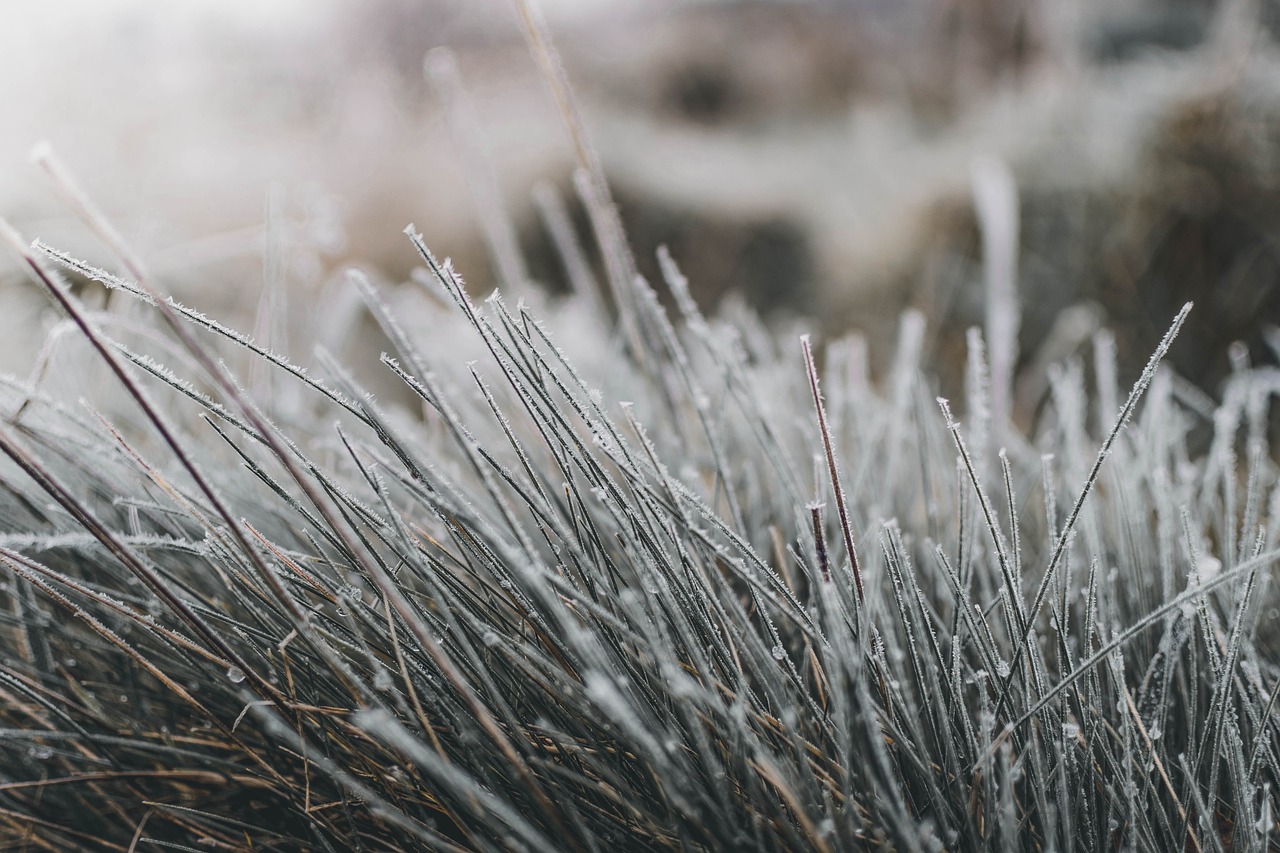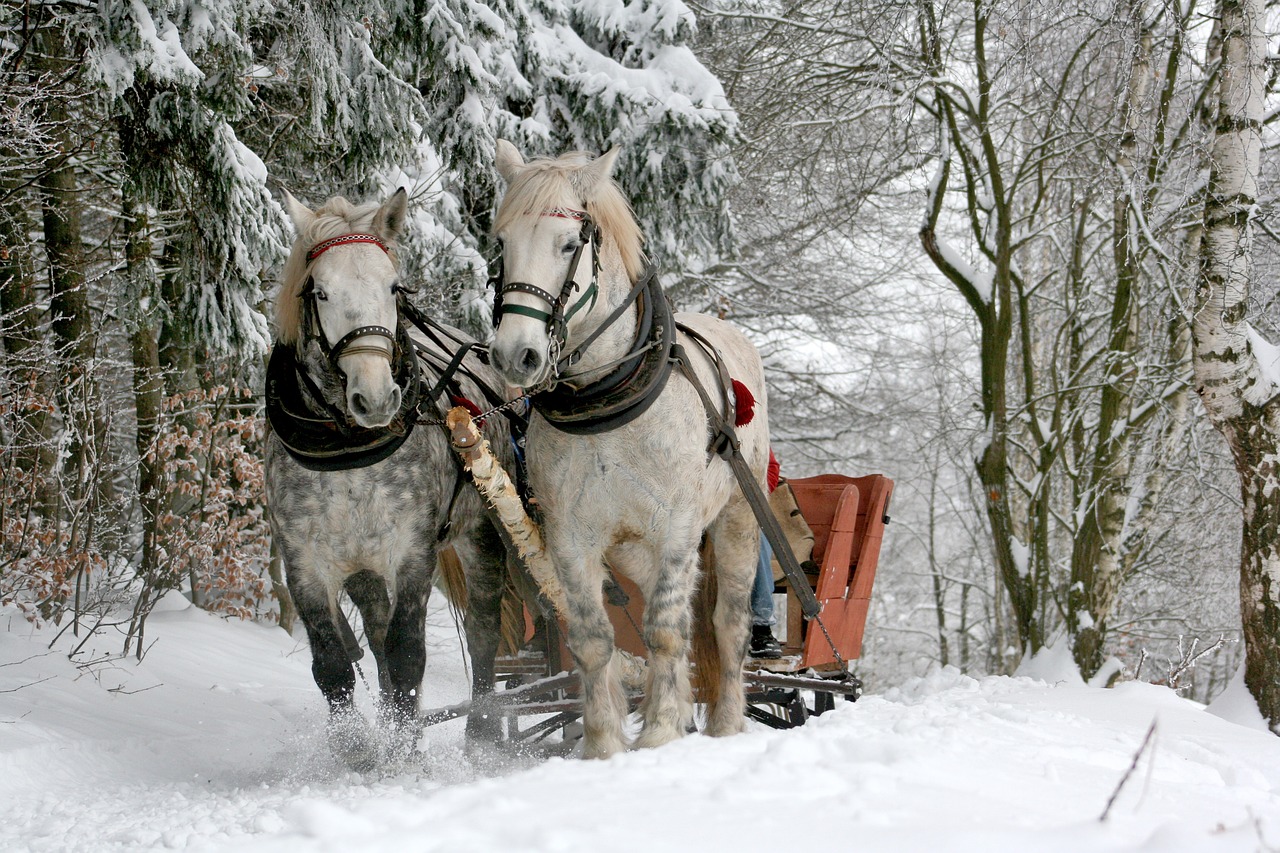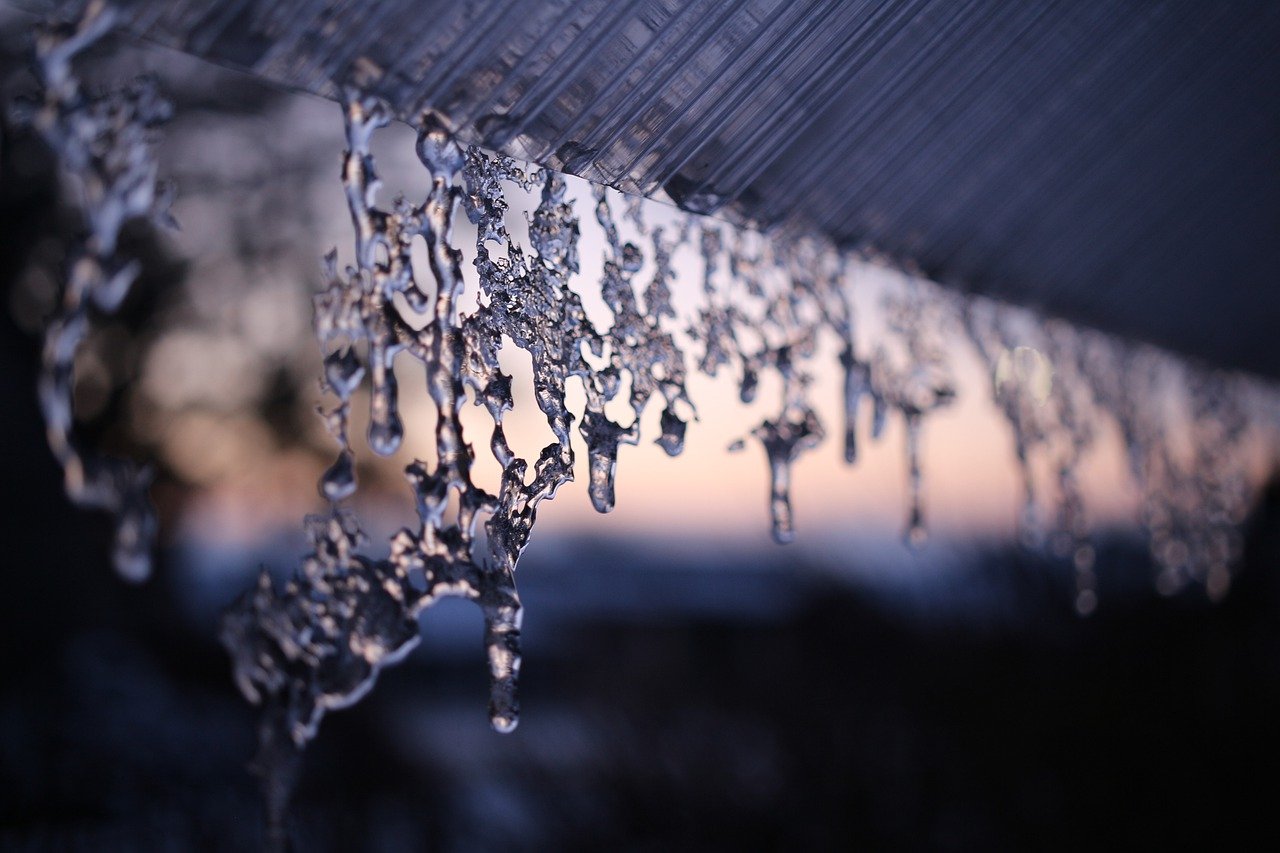Guide to Winter Pruning for Spring Blooms
Winter pruning is an essential practice for any gardener looking to ensure their plants flourish in the spring. Imagine your garden as a canvas, waiting for the vibrant colors of spring blooms to paint it anew. Just like an artist prepares their canvas, winter pruning sets the stage for a spectacular floral display. This article provides essential tips and techniques for winter pruning to ensure vibrant spring blooms. Learn about the best practices, tools, and timing for effective pruning to promote healthy plant growth.
Winter pruning is crucial for maintaining plant health and promoting robust blooms. During the colder months, many plants enter a state of dormancy, which is the perfect time to prune. This is because pruning during dormancy minimizes stress on the plants and allows them to focus their energy on new growth come spring. By removing dead or diseased branches, you not only improve the overall health of the plant but also encourage better airflow and sunlight penetration, which are vital for vibrant blooms. Think of winter pruning as giving your plants a fresh haircut; it helps them grow back stronger and more beautiful.
Timing is key for successful winter pruning. The ideal months can vary based on your location, but generally, late winter—just before the plants start to awaken from dormancy—is considered the best time. During this period, the risk of frost damage is lower, and the plants are still in a state where they can recover quickly from pruning. It's essential to keep an eye on the weather conditions as well; pruning during a dry spell can help prevent any potential shock to the plants. So, mark your calendars and get ready to wield those pruning shears!
Understanding temperature fluctuations is vital for effective pruning. Cold temperatures can affect plant health significantly, so it's crucial to wait until the worst of winter is over. Ideally, prune when temperatures are above freezing but still cool enough that the plants remain dormant. This balance helps ensure that your cuts heal properly without risking frost damage. Remember, just like us, plants can be sensitive to extreme temperatures, so knowing when to prune is half the battle.
Frost can severely impact pruned plants. It's essential to identify frost damage before you start pruning. If you notice any signs of frostbite—such as brown or blackened tips on branches—it's best to wait until the risk of frost has passed before making any cuts. Pruning too early can expose tender tissues to cold air, leading to more damage. Timing your pruning just right can be the difference between a flourishing garden and a sad, wilted mess come spring.
Recognizing when plants are dormant is essential for winter pruning. Look for signs such as leaf drop, a lack of new growth, and a general stillness in the garden. These indicators suggest that your plants are resting and ready for a trim. Dormancy is like a deep sleep for plants; they’re conserving energy and preparing for the burst of life that spring brings. Pruning during this period allows you to shape your plants without interrupting their natural cycle.
Using the right tools can make all the difference in pruning effectiveness. A clean cut is crucial for preventing disease and promoting healthy growth. Here are some essential pruning tools to consider:
- Pruning Shears: Ideal for small branches and delicate plants.
- Loppers: Perfect for thicker branches, providing more leverage.
- Saws: Necessary for larger limbs that need to be removed.
- Gloves: Protect your hands from thorns and sharp edges.
Each tool serves a specific purpose, and using them correctly will ensure that your plants remain healthy and vigorous.
Many gardeners make mistakes during winter pruning that can hinder plant growth. One of the most common errors is over-pruning. It's easy to get carried away, thinking that more cuts will lead to more blooms. However, over-pruning can lead to weak plants that struggle to recover. Instead, aim for a balanced approach—remove only what is necessary to enhance the plant's health and shape.
Over-pruning can lead to weak plants. Excessive cuts can remove too much foliage and stem, leaving the plant vulnerable. A good rule of thumb is to remove no more than one-third of the plant at any given time. This ensures that the plant retains enough energy to thrive and produce blooms in the spring. Think of it like a diet; a little trimming is good, but too much can be harmful.
Different plants have unique pruning requirements. For instance, some flowering shrubs bloom on old wood, while others bloom on new growth. Neglecting to understand these differences can lead to missed blooms. Always research your specific plants to tailor your pruning strategy accordingly. It's like knowing how to cook different dishes; each recipe has its own set of instructions for the best results.
Q: When is the best time to prune my roses?
A: Late winter, just before new growth begins, is ideal for pruning roses.
Q: Can I prune my fruit trees in winter?
A: Yes, winter is a good time to prune fruit trees, but be sure to understand their specific needs.
Q: What should I do if I accidentally prune too much?
A: Don’t panic! Just ensure proper care and watering to help the plant recover.

Understanding the Importance of Winter Pruning
Winter pruning is not just a chore; it's a vital practice that can significantly enhance the health and beauty of your garden. Think of it as giving your plants a fresh start after a long, cold season. When done correctly, winter pruning can lead to vibrant blooms come spring, making your garden the envy of the neighborhood. But why is this practice so crucial? Let's delve into the benefits.
One of the primary reasons for winter pruning is to promote air circulation within the plant. During the growing season, plants can become dense and overcrowded, which can lead to a host of problems, including disease and pest infestations. By pruning during the winter, you allow for better airflow, reducing the risk of fungal infections and encouraging healthy growth. Imagine your plants as a crowded room; when you remove some guests, everyone has more space to breathe and enjoy the party!
Another significant advantage of winter pruning is that it encourages new growth. When you cut back branches that are dead or diseased, you’re essentially telling the plant, "It's time to grow!" This stimulates the production of new buds, which will blossom beautifully in the spring. Additionally, winter pruning helps to shape the plant, allowing you to create a more aesthetically pleasing garden layout. It's like sculpting a masterpiece from a block of marble; with each cut, you reveal the beauty that lies beneath.
Moreover, winter is the perfect time to prune because plants are typically in a state of dormancy. This means they are less susceptible to stress, and the risk of damaging the plant is significantly lower. When you prune during dormancy, the plant can focus its energy on healing and preparing for the upcoming growing season. This is particularly important for flowering plants, as pruning can help manage their size and promote a more abundant bloom. In essence, you’re setting the stage for a spectacular floral performance!
In addition to improving plant health and aesthetics, winter pruning can also enhance fruit production in fruit-bearing trees and shrubs. By removing old wood and encouraging new growth, you help the plant allocate its resources more effectively, leading to a more fruitful harvest. Imagine biting into a juicy apple or a sweet peach; that deliciousness starts with proper pruning!
In summary, winter pruning is a crucial practice that offers multiple benefits, including:
- Improved air circulation
- Encouragement of new growth
- Enhanced aesthetics and shape
- Increased fruit production
- Reduced risk of disease and pests
So, as you prepare for the colder months, remember that winter pruning is not just about cutting back; it's about nurturing your garden for a glorious spring. With the right techniques and timing, you can transform your plants into healthy, blooming beauties that will brighten your outdoor space. Don't underestimate the power of a good winter pruning session—it’s the secret ingredient to a thriving garden!

Best Time for Winter Pruning
Timing is everything when it comes to winter pruning, and getting it right can mean the difference between a garden that flourishes in the spring and one that struggles to grow. Generally, the best time for winter pruning is during the dormant season, which varies depending on your climate zone. For most regions, this period falls between late fall and early spring, typically from November to March. During these months, plants are in a state of dormancy, meaning they are less susceptible to stress and damage from pruning.
But how do you know when exactly to pick up those shears? Well, it’s all about observing the weather and understanding your local climate. Ideally, you want to prune on a dry day when temperatures are above freezing. This helps prevent any shock to the plant and reduces the risk of frost damage to the freshly cut areas. If you live in an area with harsh winters, it’s crucial to wait until the coldest days have passed, as pruning during extreme cold can lead to complications.
Moreover, different plants have their own specific timing for pruning. For instance, deciduous trees and shrubs can typically be pruned in late winter or early spring before new growth begins. On the other hand, evergreen plants might benefit from pruning during late winter, just as new growth starts to emerge. It's essential to research the specific needs of the plants in your garden to ensure you’re pruning at the right time.
Here’s a quick breakdown of ideal pruning times for various plant types:
| Plant Type | Best Pruning Time |
|---|---|
| Deciduous Trees | Late Winter to Early Spring |
| Deciduous Shrubs | Late Winter to Early Spring |
| Evergreen Plants | Late Winter |
| Flowering Shrubs (spring bloomers) | Immediately after flowering |
| Flowering Shrubs (summer bloomers) | Late Winter to Early Spring |
As you can see, timing and plant type go hand in hand. If you prune too early, you risk cutting off the buds that will bloom in spring. Conversely, if you wait too long, you might hinder the plant’s growth and flowering potential. So, keep an eye on the weather and your garden’s specific needs!
In summary, winter pruning is an art that requires patience and understanding. By pruning at the right time, you not only promote healthier plants but also set the stage for a vibrant and colorful spring garden. So grab those pruners, but make sure you’re ready to make your cuts at the optimal moment!
- When is the best time to prune roses? Roses should be pruned in late winter or early spring, just before new growth begins.
- Can I prune my plants in freezing temperatures? It's best to avoid pruning in freezing temperatures as it can stress the plants and lead to frost damage.
- What should I do if I miss the winter pruning window? If you miss the ideal time, you can still prune in early spring, just be cautious not to cut off any buds.
- How do I know if my plants are dormant? Dormant plants typically have no leaves and are not actively growing. Look for signs of leaf drop or a lack of new growth.

Temperature Considerations
When it comes to winter pruning, temperature plays a crucial role in the health and vitality of your plants. Understanding how cold temperatures affect your garden can help you make informed decisions about when and how to prune. Generally, the best time to prune is during the dormant season, which typically occurs in late winter or early spring, just before new growth begins. However, you need to be cautious about the temperature fluctuations that can occur during this time.
Cold temperatures can stress plants, making them more susceptible to damage. If you prune when it's too cold, you risk exposing the plant to further stress, leading to poor growth or even death in extreme cases. Ideally, the temperature should be above freezing, as this minimizes the risk of frost damage on freshly cut branches. It's essential to monitor the weather and choose a day when temperatures are stable and mild for your pruning activities.
Moreover, plants respond differently to cold temperatures. Some species are more resilient than others, so it's vital to know the specific needs of your plants. For instance, deciduous trees and shrubs can usually handle a bit of cold, while tender perennials might require a gentler touch. This understanding can guide your pruning schedule and technique.
Here’s a quick reference table to help you understand the temperature considerations for pruning various plant types:
| Plant Type | Ideal Pruning Temperature | Notes |
|---|---|---|
| Deciduous Trees | Above 32°F (0°C) | Best pruned in late winter. |
| Evergreen Shrubs | Above 28°F (-2°C) | Prune lightly to avoid damage. |
| Tender Perennials | Above 40°F (4°C) | Wait until the danger of frost has passed. |
In addition to temperature, consider the microclimates in your garden. Areas that receive more sunlight or are sheltered from the wind may experience warmer temperatures than the surrounding areas. This can influence when plants enter dormancy and when they are ready for pruning. Always take the time to observe your garden's unique conditions to optimize your pruning schedule.
In conclusion, temperature considerations are vital for successful winter pruning. By being aware of the ideal conditions, you can ensure that your plants remain healthy and are primed for a spectacular bloom come spring. Remember, a little knowledge goes a long way in creating a thriving garden!
- When is the best time to prune my plants?
The best time to prune most plants is during their dormant season, typically in late winter or early spring, just before new growth begins.
- What temperature is too cold for pruning?
It’s generally best to prune when temperatures are above freezing (32°F or 0°C) to minimize stress on the plants.
- Can I prune if there’s frost on the ground?
It's best to wait until the frost has melted, as pruning during frosty conditions can cause additional damage to the plant.

Frost and Its Impact
Frost can be a sneaky adversary in the garden, especially during the winter months when we’re busy preparing our plants for the upcoming spring. Understanding how frost affects your pruned plants is crucial for ensuring they survive and thrive once the warmer weather rolls in. When temperatures drop below freezing, the moisture in plant tissues can freeze, leading to potential damage. This damage can manifest in various ways, from wilted leaves to stunted growth, and in severe cases, it can even kill the plant.
One of the most significant impacts of frost is on the newly pruned areas of plants. When you prune, you create fresh cuts that expose the inner tissues to the elements. If a sudden frost hits after you've pruned, these cuts can become a gateway for cold damage. To mitigate this risk, it's essential to time your pruning wisely. Ideally, you should aim to prune your plants just before they enter dormancy, ensuring that any new growth will be protected by the plant's natural defenses.
But how can you tell if your plants have suffered from frost damage? Here are some signs to look for:
- Discoloration: Leaves may turn brown or black, indicating that they have been frozen.
- Wilting: Damaged tissues can cause leaves to droop or wilt, even if they were previously healthy.
- Soft Spots: Areas on stems or branches may become mushy, a sign that the tissue has been compromised.
If you notice any of these signs, it’s crucial to assess the extent of the damage. In some cases, you may need to prune away the affected areas to encourage healthier growth. However, be cautious not to over-prune, as this can lead to further stress on the plant. Remember, the goal is to promote resilience and prepare for the vibrant blooms of spring!
In summary, frost can have a profound impact on your garden, particularly after winter pruning. By understanding the risks and recognizing the signs of frost damage, you can take proactive steps to protect your plants. Timing your pruning correctly and monitoring for frost will help ensure that your garden flourishes when spring finally arrives.
Q: When is the best time to prune my plants to avoid frost damage?
A: The best time to prune is typically late winter, just before the plants enter dormancy. This timing helps minimize the risk of frost damage to fresh cuts.
Q: How can I protect my plants from frost after pruning?
A: Covering your plants with frost cloth or burlap can provide added protection during cold snaps. Additionally, ensure that your plants are healthy and well-watered before winter, as this can help them withstand frost better.
Q: What should I do if I notice frost damage on my plants?
A: Assess the damage carefully. If the damage is minor, you may not need to do anything. However, if you see significant damage, prune away the affected areas to encourage new growth.

Signs of Dormancy
Recognizing the signs of dormancy in your plants is crucial for effective winter pruning. Just like humans need a good night's sleep to recharge, plants also go through a period of rest during the colder months. This dormancy phase is their way of conserving energy and resources, allowing them to bounce back with vigor come spring. So, how can you tell if your plants are in this restful state? Here are some key indicators to look for:
- Leaf Drop: Many deciduous plants will shed their leaves in preparation for winter. If you notice bare branches, it's a strong sign that your plant is entering dormancy.
- Stunted Growth: During dormancy, growth slows down significantly. If your plants are no longer producing new shoots or leaves, they are likely dormant.
- Change in Color: Some plants may exhibit a change in color as they prepare for winter. For instance, vibrant green leaves may turn yellow or brown before falling off.
- Reduced Water Needs: Dormant plants require less water compared to their active growing phase. If you find that your plants aren't drinking as much, they may be in dormancy.
Understanding these signs can help you determine the best time for pruning. Pruning during dormancy is beneficial because it minimizes stress on the plant and allows for better healing after cuts are made. However, it's essential to ensure that your plants are truly dormant before you make any cuts. Pruning too early can lead to unnecessary damage, especially if a warm spell tricks your plants into thinking it's spring. Just like you wouldn’t wake a sleeping bear, you don’t want to disturb your plants until they’re ready!
Once you've established that your plants are dormant, you can confidently proceed with pruning. This is the perfect time to shape your plants, remove dead or diseased branches, and promote healthy growth for the upcoming season. Think of it as giving your plants a fresh haircut before they start to grow again. With the right timing and techniques, you’ll set the stage for a stunning spring bloom that will make all your gardening efforts worthwhile!
Q: How do I know if my plant is dormant?
A: Look for signs such as leaf drop, stunted growth, and reduced water needs. If your plant appears inactive and has no new growth, it’s likely dormant.
Q: Is it safe to prune during winter?
A: Yes, pruning during winter is safe and beneficial as long as your plants are dormant. This helps them heal quickly and prepares them for spring.
Q: What happens if I prune too early?
A: Pruning too early can stress the plant and lead to damage, especially if temperatures fluctuate. It’s important to wait until the plant is fully dormant.
Q: Can all plants be pruned in winter?
A: Not all plants should be pruned in winter. Deciduous plants are typically pruned during dormancy, while some evergreen plants may require different timing. Always check the specific needs of your plants.

Essential Tools for Pruning
When it comes to winter pruning, having the right tools can make all the difference between a seamless experience and a frustrating one. Think of your pruning tools as the brushes and palette of an artist; without them, creating a masterpiece is nearly impossible. So, what tools should you have in your gardening arsenal? Let’s dive into the essentials!
First and foremost, a good pair of pruning shears is a must-have. These are your go-to tools for cutting small branches and stems. Look for a pair that feels comfortable in your hand; after all, you don’t want to end up with blisters halfway through your pruning session! Make sure they have a sharp blade, as clean cuts promote faster healing for your plants.
Next up, consider investing in a lopper. These are ideal for reaching those thicker branches that your shears just can’t handle. Loppers come with long handles, giving you the leverage you need to make clean cuts without straining your back. Just imagine trying to cut a tree branch with a pair of scissors; it’s simply not going to work!
For those larger projects, a pruning saw is essential. This tool is perfect for tackling bigger branches that need a bit more muscle. A pruning saw allows you to cut through hard wood with ease, ensuring that your plants remain healthy and vibrant. Remember, using the right tool for the job not only saves you time but also minimizes stress on the plant.
In addition to these tools, don’t overlook the importance of gloves. A sturdy pair will protect your hands from thorns and rough bark, making your pruning experience much more enjoyable. Think of gloves as your gardening armor; they shield you from the potential hazards lurking in your garden.
Lastly, keep a garden bag handy for collecting all the clippings and debris. This not only keeps your workspace tidy but also makes it easier to dispose of the waste once you’re done. It’s like having a trash can right at your fingertips—no more running back and forth to clean up!
Here’s a quick recap of essential pruning tools:
| Tool | Purpose |
|---|---|
| Pruning Shears | For cutting small branches and stems. |
| Lopper | For thicker branches. |
| Pruning Saw | For larger, more robust branches. |
| Gloves | To protect your hands. |
| Garden Bag | For collecting clippings and debris. |
In conclusion, equipping yourself with the right tools is the first step toward successful winter pruning. Each tool serves a unique purpose, and understanding how to use them effectively will set you up for a flourishing spring bloom. So, gear up and get ready to nurture your garden like a true pro!
- What is the best time to prune? Winter is generally the best time as plants are dormant, allowing for healthier regrowth in spring.
- Can I use regular scissors for pruning? While you could, it’s not advisable. Pruning shears are designed to make clean cuts that scissors cannot achieve.
- How do I know if I’ve pruned enough? A good rule of thumb is to remove about 20-30% of the plant’s growth, focusing on dead or crossing branches.
- What if it’s too cold to prune? If temperatures are extremely low, it’s best to wait for a milder day to avoid damaging the plant.

Common Mistakes to Avoid
When it comes to winter pruning, even seasoned gardeners can trip over common mistakes that can sabotage their efforts. One of the most prevalent errors is over-pruning. It's tempting to take a heavy hand when you see unruly branches, but removing too much can leave your plants vulnerable and weak. Think of it like giving your plant a drastic haircut; while it may look tidy, it can lead to stress and hinder growth. Instead, aim for a balanced approach, removing only what is necessary to encourage healthy development.
Another pitfall many fall into is neglecting the specific needs of different plant types. Not all plants are created equal, and each has its own unique pruning requirements. For instance, some flowering shrubs bloom on old wood, while others thrive on new growth. Understanding the specific needs of your plants is crucial. A good rule of thumb is to research the particular species you are working with. This ensures that your pruning efforts align with their natural growth patterns, fostering vibrant blooms come spring.
Additionally, timing can be a significant factor. Pruning too early or too late can lead to missed opportunities for growth. Ideally, you want to prune when the plants are fully dormant, which typically occurs in late winter. However, if you’re unsure, look for signs of dormancy such as leaf drop or a lack of new growth. This is your cue to grab those pruning shears and get to work!
Moreover, failing to use the right tools can also lead to mistakes. Using dull or inappropriate tools can cause ragged cuts that may invite pests or disease. Always ensure your tools are sharp and clean; this not only helps you make precise cuts but also minimizes the risk of infection to your plants. A well-maintained pair of pruning shears can be the difference between a thriving garden and one plagued by problems.
Lastly, it’s essential to be mindful of the weather conditions during your pruning sessions. Pruning during wet or overly cold conditions can stress your plants and make them more susceptible to frost damage. Always check the forecast before heading out. If temperatures are expected to drop significantly, it might be wise to postpone your pruning plans until conditions improve.
In summary, avoiding these common mistakes—over-pruning, neglecting plant types, poor timing, using the wrong tools, and ignoring weather conditions—can set you on the right path for a flourishing garden in the spring. By being vigilant and informed, you can ensure that your winter pruning efforts yield the beautiful blooms you desire.
Q: When is the best time to prune my plants for spring blooms?
A: The best time to prune is typically late winter when plants are fully dormant. This varies by species, so it's essential to know the specific needs of your plants.
Q: What tools do I need for effective winter pruning?
A: Essential tools include sharp pruning shears, loppers, and a handsaw for larger branches. Make sure to keep them clean and well-maintained for the best results.
Q: How can I tell if my plant is dormant?
A: Signs of dormancy include leaf drop, lack of new growth, and a general appearance of stillness. If your plant exhibits these signs, it’s likely the right time to prune.
Q: Can I prune during a frost?
A: It's best to avoid pruning during frost, as this can damage your plants. Wait until the weather warms up a bit to ensure a healthier pruning process.

Over-Pruning
When it comes to winter pruning, one of the most significant risks gardeners face is . This mistake can lead to a cascade of problems that may leave your plants vulnerable and weak. Imagine your plants as a person who has just undergone a drastic diet; if too much is taken away too quickly, they may become frail and unable to thrive. Similarly, plants that are over-pruned can struggle to recover, leading to stunted growth and fewer blooms come spring.
Over-pruning occurs when you remove too much foliage or branches, disrupting the plant's natural growth cycle. Each plant has a specific amount of foliage it needs to photosynthesize effectively. When you cut away too much, you might be stripping away the very parts that allow the plant to gather energy and nutrients. This can lead to weakened stems and reduced flowering, leaving you with a garden that lacks vibrancy and life.
To avoid the pitfalls of over-pruning, it’s essential to follow a few key guidelines:
- Know Your Plant: Different species have unique pruning needs. Research the specific requirements for each plant to understand how much you can safely remove.
- Assess Before You Cut: Take a moment to evaluate the plant's health and structure. Look for dead or damaged branches, and focus on removing those rather than taking off healthy growth.
- Prune Gradually: If you're unsure, it's better to prune a little and observe how the plant responds rather than making drastic cuts all at once.
Remember, pruning is not just about aesthetics; it’s about maintaining the health of your plants. A well-pruned plant should look balanced and natural, not like it has been subjected to a harsh haircut. By being mindful of how much you prune, you can ensure your plants remain healthy and strong, ready to burst into bloom when the warmer months arrive.
Q1: How can I tell if I've over-pruned my plants?
A1: Signs of over-pruning include stunted growth, excessive leaf drop, and a lack of blooms in the following season. If your plants seem weakened or are not thriving, you may have removed too much material.
Q2: What should I do if I accidentally over-prune?
A2: If you've over-pruned, the best approach is to give your plants time to recover. Ensure they receive adequate water and nutrients, and avoid further pruning until they show signs of new growth.
Q3: Are there specific plants that are more susceptible to over-pruning?
A3: Yes, some plants, like flowering shrubs and certain perennials, can be more sensitive to heavy pruning. Always check the specific pruning guidelines for each plant type.

Neglecting Plant Type
When it comes to winter pruning, one of the most significant mistakes a gardener can make is neglecting the specific needs of different plant types. Each plant species has its own unique requirements, and failing to recognize these can lead to disastrous results. For instance, some plants thrive when pruned aggressively, while others may suffer from even a light trim. It's akin to trying to use a one-size-fits-all approach in a world where customization is key. Just as you wouldn't wear the same outfit to a beach party and a formal dinner, your plants deserve tailored care.
Understanding the growth habits and blooming cycles of your plants is essential. For example, spring-flowering shrubs like lilacs and forsythias should be pruned right after they bloom, as they set their buds on old wood. If you prune them in winter, you risk cutting off next season's flowers! On the other hand, summer-blooming plants, such as butterfly bushes, can be pruned in late winter or early spring since they produce flowers on new growth. This knowledge is crucial for ensuring that your garden bursts into life with vibrant colors come spring.
To illustrate the differences in pruning needs, consider the following table that outlines some common plants and their ideal pruning times:
| Plant Type | Best Pruning Time | Notes |
|---|---|---|
| Spring-flowering shrubs (e.g., lilac) | Immediately after flowering | Prune old wood to avoid cutting off next year's blooms. |
| Summer-flowering shrubs (e.g., butterfly bush) | Late winter to early spring | Prune to encourage new growth and blooms. |
| Evergreens (e.g., pine) | Late winter | Minimal pruning; only remove dead or damaged branches. |
| Deciduous trees (e.g., maple) | Late winter | Prune while dormant to promote healthy growth. |
Additionally, it's important to consider the specific characteristics of your plants. For instance, some plants may be more susceptible to disease if pruned at the wrong time or in the wrong way. Others might have unique growth patterns that dictate how and when they should be pruned. Therefore, taking the time to research and understand the specific needs of your plants will help you avoid the pitfalls of neglecting plant type.
In summary, the key takeaway here is that knowledge is power. By familiarizing yourself with the various types of plants in your garden and their specific pruning requirements, you can ensure that your winter pruning efforts yield the best possible results. So, before you grab those shears, take a moment to consider what each plant truly needs. Your spring blooms will thank you for it!
- What is the best time to prune my flowering shrubs? It depends on the type of shrub. Generally, spring-flowering shrubs should be pruned after they bloom, while summer-flowering shrubs can be pruned in late winter or early spring.
- How can I tell if my plants are dormant? Dormant plants will have no new growth and their leaves may have fallen off. This is usually during the colder months.
- What tools do I need for winter pruning? Essential tools include sharp pruning shears, loppers for thicker branches, and a pruning saw for larger cuts.
Frequently Asked Questions
- What is winter pruning and why is it important?
Winter pruning is the practice of trimming and shaping plants during their dormant season. This is crucial because it helps maintain plant health, encourages robust growth, and promotes vibrant blooms in spring. By removing dead or diseased branches, you give your plants the best chance to thrive when the warmer weather arrives.
- When is the best time to prune my plants in winter?
The ideal time for winter pruning varies depending on the type of plant, but generally, late winter is the best time to prune before new growth begins. Look for a period when temperatures are stable and avoid pruning during extreme cold or frost to minimize stress on your plants.
- How can I tell if my plants are dormant?
Plants are considered dormant when they have stopped growing and their leaves have fallen off. Signs of dormancy include a lack of new buds or leaves and a general appearance of stillness. This is the perfect time for pruning, as the plants are less susceptible to damage.
- What tools do I need for effective winter pruning?
Essential tools for winter pruning include sharp pruning shears, loppers for thicker branches, and a saw for larger limbs. Having the right tools ensures clean cuts, which helps prevent disease and promotes healthy healing for your plants.
- What are some common mistakes to avoid when pruning?
One common mistake is over-pruning, which can weaken your plants. It's important to remove only what’s necessary and to understand the specific needs of each plant type. Neglecting to research the best practices for different plants can lead to poor results.
- How does frost affect pruned plants?
Frost can damage freshly pruned plants if they are pruned too early. It’s essential to wait until after the threat of frost has passed to avoid harming the new growth. Always check the weather forecast before deciding to prune.



















